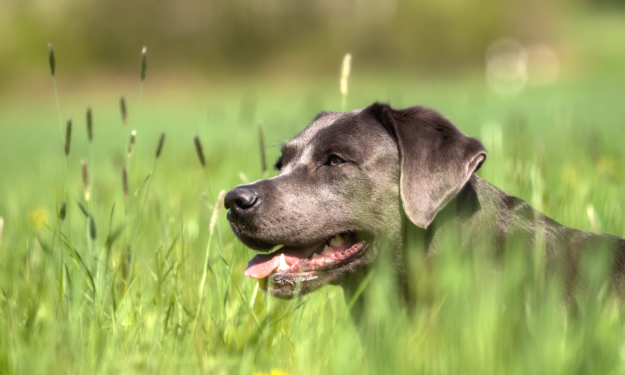Heatstroke in Dogs
June 14, 2017
What is Heatstroke?
Heatstroke is a very serious medical condition caused by uncontrolled elevation of a mammal’s core body temperature by an outside source. It is a true veterinary emergency and can quickly become life-threatening.
Heatstroke can cause airway swelling (making it difficult to breathe), lowered blood pressure, and damage to internal organs due to blood clotting issues. Dogs who initially seem to be recovering following an episode of heatstroke can still develop severe organ dysfunction, severe bruising, abnormal bleeding and blood clotting issues several hours to several days later.
How Do Dogs Get Heatstroke?
Hot Cars
The commonly quoted example of heatstroke is the dog locked in a hot car. Car windows generate a greenhouse effect, allowing heat in, but preventing heat from escaping, causing temperatures inside the car to rise quickly. Temperatures in cars can easily exceed outdoor air temperatures by 30–40 degrees in a matter of a few minutes, even with the windows open. In the veterinary hospital, we see these cases from late spring to mid fall and on unusually warm, humid days year-round.
exercising during Hot Days
Although the dog in the hot car is the classic example of a setting that may cause heatstroke, heatstroke can be seen in any dog or cat (or human), on a hot or humid day, whether they are indoors or outdoors. Heatstroke can be caused by both by the environment (as in the hot car example) or by exertion. We have seen patients in the hospital with heatstroke symptoms that developed while playing fetch outside for 30 minutes on 70 degree days.
Treatment
Heatstroke can be treated if caught early enough. Dogs being treated at a veterinary hospital for heatstroke will be cooled to lower their body temperature. Cooling should begin immediately, and is best carried out under veterinary supervision as it is very easy for a dog to develop hypothermia (uncontrolled drop in core temperature). Veterinarians use a variety of techniques and tools to facilitate both rapid and controlled cooling.
Further diagnostic and therapeutic recommendations will likely include full bloodwork, to help evaluate organ dysfunction and the dog’s ability to clot, and hospitalization for supportive care. Supportive care can be very case dependent, but may include administration of intravenous fluids, plasma transfusions, antibiotics and gastrointestinal protectants.
Symptoms
Signs of heatstroke can be very subtle. Symptoms include:
- collapse
- weakness
- bloody diarrhea
- excessive panting
If you suspect your dog is suffering from heatstroke, seek veterinary care immediately. Some dogs can present with a normal rectal temperature, but can still be suffering from heatstroke.
Breed Predilection: Types of Dogs More Prone to Heatstroke
Brachycephalic breeds of dogs are particularly susceptible to developing heatstroke. “Brachycephalic” refers to the short-nosed breeds (i.e. Bulldogs, Pugs, Pekingese, Boston Terriers). Their unique anatomy blocks the flow of air into their lungs. In some cases the trachea (the breathing tube) may also be more narrow than those of other breeds, and this will further restrict airflow to their lungs. Brachycephalic breeds suffer more than most in hot weather, though all dogs are prone to heatstroke.
Heatstroke is Preventable!
You can prevent heatstroke in your dog by:
- Never leaving your dog in alone in the car, with or without the windows open, even on days that seem mild.
- Being aware of your dog spending time outdoors over extended periods of time – check up on them frequently to ensure they are not overheating.
- Making sure your pets always have access to fresh water and shade.
- Wetting your dog gently with a garden hose, or encouraging him or her to go swimming is a great method for cooling your dog.
On hot summer days, dogs are best left inside with air conditioning or a fan. If you suspect your dog is suffering from heatstroke please seek emergency veterinary care.